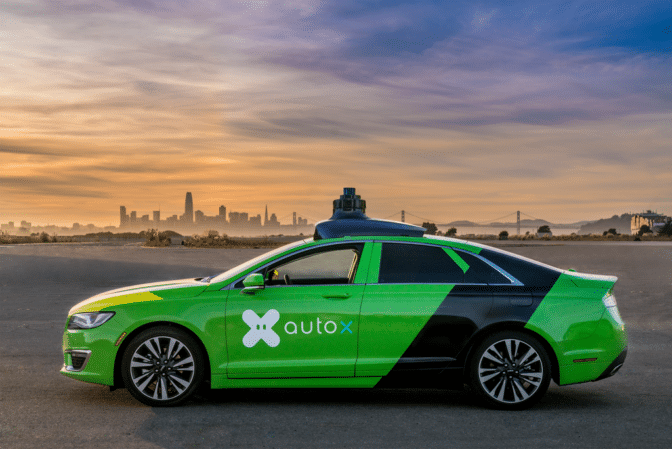Two of NVIDIA’s automotive partners have announced big plans for small trips.
Autonomous vehicle solution provider AutoX and Swedish electric vehicle manufacturer NEVS are partnering to deploy robotaxis in Europe by the end of 2020.
The partnership, which came together through the NVIDIA DRIVE ecosystem, aims to bring self-driving and EV technology to everyday transportation, paving the way for cleaner and more efficient mobility.
The vehicles, which are based on NEVS’ mobility-focused self-driving car concept, run AutoX’s autonomous driving software and use the high-performance, energy-efficient NVIDIA DRIVE AGX Pegasus platform.
“The processing power and efficiency of the NVIDIA DRIVE platform is incredibly beneficial to this deployment,” said Jianxiong Xiao, founder and CEO of AutoX. “It’s an excellent way to achieve scale and reliability.”
When in Rome
Robotaxis must blend with traffic to operate efficiently. An overly cautious or slow vehicle can frustrate travelers almost as much as a large tourist group taking photos in the middle of a busy crosswalk.
That’s where the AutoX software comes in. Running on the automotive-grade DRIVE AGX Pegasus, the autonomous driving algorithms can learn and adapt to local driving styles quickly. The AI supercomputer platform is based on the Xavier system-on-a-chip — the first production-level SoC dedicated to autonomous driving — which has passed assessments by global functional safety experts.

In addition to world-class safety, DRIVE AGX Pegasus achieves an unprecedented 320 trillion computing operations per second without taking up more space than a laptop computer. Backed by this performance, the AutoX system can perceive busy urban environments in real time, allowing the vehicle to safely react.
Rather than building vehicles dedicated to specific cities, the flexibility of the AutoX system and DRIVE AGX Pegasus makes it possible to deploy robotaxis in diverse environments — such as narrow city streets, crowded tourist areas and residential blocks.
A Design Fit for the Louvre
While the robotaxis’ driving may fit in with everyday traffic, their design will be sure to turn heads. NEVS is basing the EV’s design on its futuristic InMotion concept first shown at CES Asia, breaking away from traditional driver-focused vehicles.
The majority of cars today spend about 95 percent of their lifetime parked. The NEVS EV, however, is designed for constant motion. Its chassis, interior and even doors are built for long-term durability, withstanding driving all day and night with a steady rotation of passengers.
The vehicle’s interior can be used to transport goods or passengers, with customizable seating that offers privacy and comfort, as well as the benefits of shared transportation. The result is efficient mobility designed to be accessible to everyone and to reduce congestion.
“The industry-leading capabilities of the NVIDIA DRIVE platform combined with AutoX software enables us to realize the transportation future we want to create,” said Stefan Tilk, CEO of NEVS.
The companies are beginning testing in Europe as NEVS continues to develop its autonomous vehicle platform for deployment next year. And with the help of NVIDIA DRIVE, the robotaxis will continue their autonomous travels across the rest of the globe.
